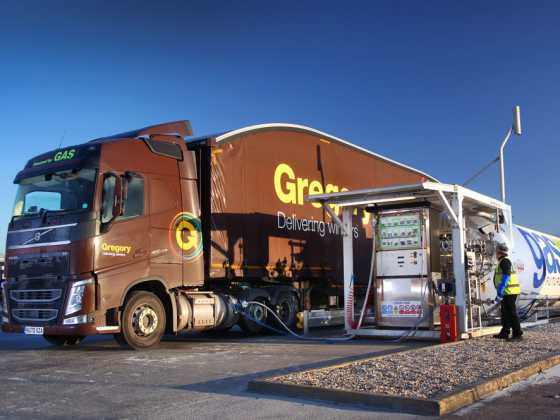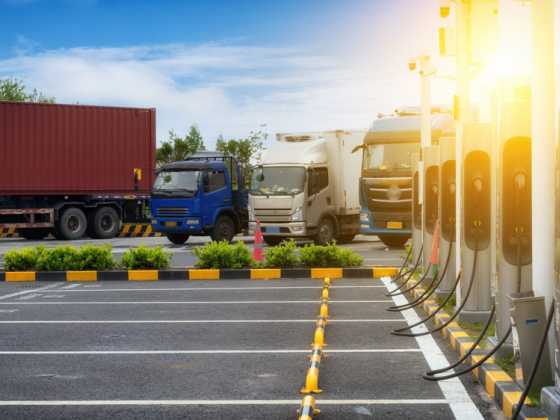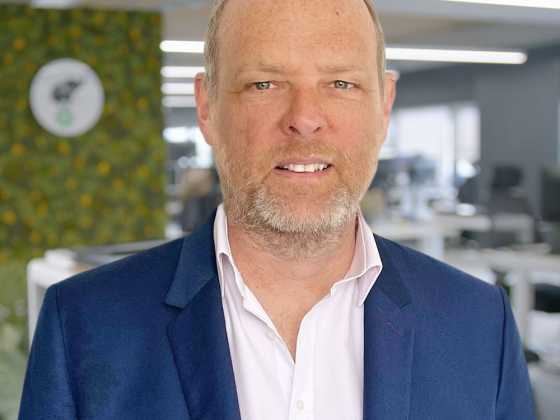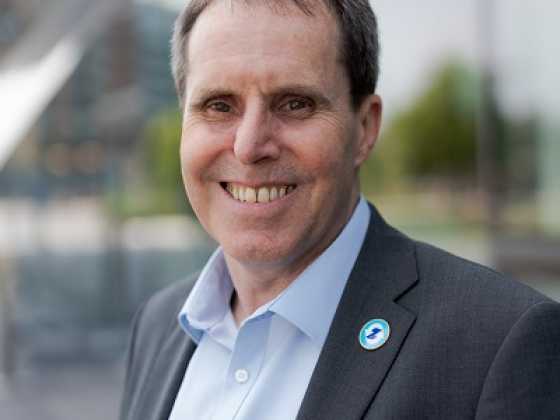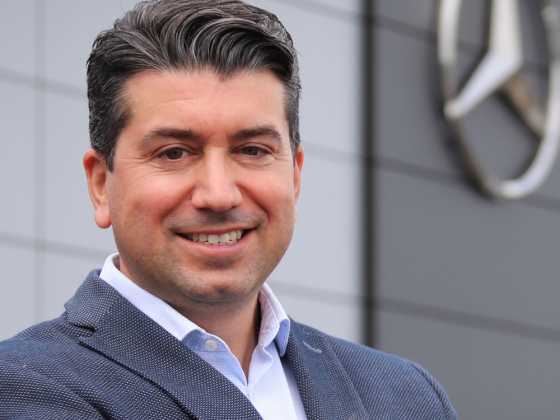Showing small businesses the way to decarbonise
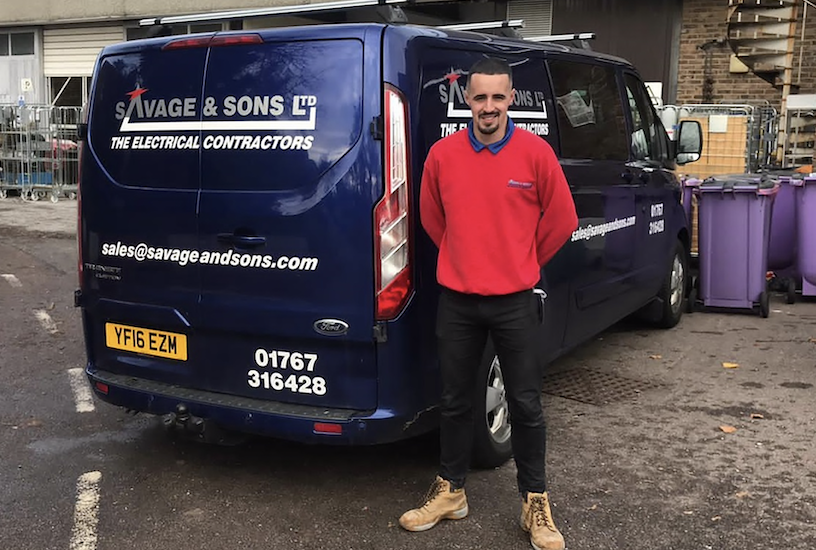
Small and micro businesses want help with weighing up the costs, savings and practical implications of making the change to electric vehicles. Florentine Roy, project lead from the innovation team at UK Power Networks, explains how small businesses can confidently make the switch
Image shows David Savage, managing director of Savage & Sons Electrical Ltd - a small businesses that has been looking to switch to EVs
Small businesses are at the heart of the UK’s economic recovery from Covid-19, and UK Power Networks is doing all it can to help make the sector bounces back better.
We estimate there are more than two million Small to Medium-sized Enterprises (SMEs) across the areas we serve, and over the past year we’ve really focused on finding new ways to help them overcome some common challenges of transitioning their fleet to electric - which have intensified during the pandemic.
Transport accounts for 28 per cent of greenhouse gas emissions in the UK, which is a stark statistic and it’s one of the largest contributors to the climate crisis. EV uptake is accelerating with around 4.5 million EVs forecast to connect to the grid in London, the East and South East network by 2030.
Transitioning to electric
UK Power Networks distributes electricity to 8.2 million homes and businesses across London, the South East and East of England and is a key part of helping the UK transition to low carbon electric transport and heating.
We recognise we have a role to play to make it as easy as possible for businesses to make the transition, and we’re supporting fast, affordable and inclusive roll-out of EV infrastructure as part of a smart, flexible energy system.
From our point of view, our role is to be an enabler of the transition to electric vehicles. We cannot be an obstacle to it happening, in fact we need to drive it. I think that in many respects SMEs have the same worries and concerns as the wider public when buying EVs; the first being cost, the second a lack of information and the third being infrastucture.
As part of our work with the Federation of Small Businesses (FSB) and the Mayor of London’s EV Taskforce to support the wider move towards Net Zero, we have talked to 1,200 SMEs and 88 representative bodies about electric vehicles. Many want to make the switch to EVs but we heard they lacked the time and expertise to prepare – making them the most likely group to get left behind in the transition to low carbon.
An action plan
The one thing most business owners wanted, was a central, trusted source of real-life EV examples, to help them weigh up the costs, savings and practical implications. So in the run-up to the COP26 global climate conference, we are collaborating in the Zero Carbon Business Partnership with the FSB, to develop a central online advice service, packed with case studies, showing small businesses the way to decarbonise.
After business representatives told us of their concerns and based on our learnings, we segmented SMEs into groups with similar needs and developed an action plan for each of these.
We launched the White Van Plan project to segment the SME market, investigate specific needs and tailor support in the transition to a low carbon economy. The objective of this research was to develop a comprehensive understanding of SMEs, understand how SMEs use vehicles, what barriers they may face in transitioning to electric mobility and how UK Power Networks could help them on this journey.
We developed the first segmentation of SMEs based on vehicle usage, and prioritised key actions to support SMEs in their EV transition.
Microbusinesses
Microbusinesses, who make up 96 per cent of SMEs, are currently the least likely to switch to EVs, so we prioritised supporting this group first. These microbusinesses want help with weighing up the costs, savings and practical implications of making the change. We are now collaborating in the Zero Carbon Business partnership to develop a central online advice service for small businesses wishing to decarbonise. This acts as a hub, with tailored content designed to address head-on the key barriers being raised by each SME segment.
We are striving to provide tailored and relevant guidance to support the EV transition of about 800,000 SMEs who operate a vehicle for business purposes and to do that we are among those who have put in place a central information point with clear, accessible information that SMEs know they can trust.
Through our Extra Care Register and wider engagement we have also worked closely with SMEs through online surveys and discussions to better understand what difficulties they face in the event of a power cut and how we can best tailor our support to meet their needs and deliver for them. This is about action based on their feedback, not just talking.
We are already seeing a substantial rise in the number of EVs in our network areas and working hard to make sure we are ready for our customers to charge them. We are innovating to meet what is a significant technical challenge.
Small businesses
One business owner we contacted was David Savage, managing director of Savage & Sons Electrical Ltd in Bedfordshire, who said: “I’ve been thinking about switching to electric transport for years. I firmly believe it’s an important step and it’s only going to become more necessary in the future. For small companies to be interested in EVs, it is vital they understand the potential financial benefits and get extra support, especially during the challenges we are facing right now. It’s great to hear about projects like this aimed at helping companies like ours.”
FSB national chairman Mike Cherry said: “Small businesses are committed to sustainability, and a gradual, affordable move to electric vehicles will be an important step along this journey. It is very welcome that UK Power Networks gained a detailed understanding of their needs and the support which will be necessary both to help as many as possible transition to electric vehicles in the future where the available technology allows, and to make sure the infrastructure they will need alongside that will be provided.”

